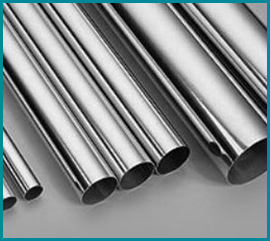In high-heat-resistance, corrosion-resistant, and durable industries, stainless steel has been a material of choice for years. Out of the numerous grades available, Stainless Steel 309, 310, and 310S are particularly well known for their superior performance at high temperatures. This article presents an in-depth guide to these all-purpose stainless steel alloys based on their properties, differences, applications, and advantages in the form of pipes and tubes.
Understanding the Basics
Before diving into their applications and advantages, it's essential to understand the key characteristics of each grade.
Stainless Steel 309
SS 309 is an austenitic chromium-nickel stainless steel known for its superior oxidation resistance at high temperatures. It offers good strength and excellent resistance to scaling up to 1093°C (2000°F). It is often used in furnace components, heat exchangers, and other applications where thermal cycling is common.
Stainless Steel 310
SS 310 has more chromium and nickel content than 309, which makes it even more corrosion and oxidation resistant. It is capable of sustaining continuous exposure to temperatures up to 1150°C (2100°F) and intermittent service up to 1040°C (1900°F). It is widely utilized in industrial heat equipment and thermal processing systems.
Stainless Steel 310S
310S is the low carbon equivalent of SS 310. Having the same chemical composition as the 310 SS, the lower carbon content reduces the risk of carbide precipitation on welding, making it more preferred for welded applications at high temperatures. It also offers improved ductility and weldability.
Key Properties at a Glance
Property\tSS 309\tSS 310\tSS 310S
Composition\tCr: 22-24%, Ni: 12-15%\tCr: 24-26%, Ni: 19-22%\tSimilar to 310 with low carbon
Max Service Temp\t~1093°C (2000°F)\t~1150°C (2100°F)\tSlightly lower due to lower carbon
Oxidation Resistance High Very High Very High
Weldability Good Moderate Excellent
Corrosion Resistance Good Excellent Excellent
Applications of SS 309, 310, and 310S Pipes & Tubes
These stainless steel grades have wide usage in challenging industrial applications, including:
Petrochemical and Refining – Utilized in reformers, heaters, and boilers in which severe temperatures are a regular occurrence.
Furnace Components – Suitable for radiant tubes, muffles, and retorts.
Power Generation – Employed in heat exchangers and high-temperature ducting.
Food Processing – Especially where heat is applied in sanitization or drying operations.
Cement and Steel Plants – For managing hot gases and building components in proximity to furnaces.
Advantages of Utilizing SS 309/310/310S Pipes & Tubes
Increased Heat Resistance: These alloys are made to function satisfactorily under heat stress, thus increasing the component lifespan.

Excellent Corrosion Resistance: In oxidizing conditions also, these grades experience less corrosion compared to numerous other materials.
Weldability and Fabrication: Fabrication is simpler, particularly with 310S, and hence it's an excellent choice for complicated assemblies.
Low Maintenance: Since they are stronger, they need to be replaced and repaired less often.
Selecting the Right Grade
For strength at high temperature: SS 310 should be used.
For improved weldability and reduced susceptibility to sensitization: SS 310S can be used.
For a combination of price and performance: SS 309 may be a less expensive choice while maintaining adequate high-temperature integrity.
Conclusion
Stainless Steel 309, 310, and 310S pipes and tubes provide superior performance in conditions under which regular stainless steels would collapse. Due to their extremely high heat resistance and corrosion properties, they play a critical role in industries where strength, safety, and endurance are paramount. The selection depends on the industry, budget, and required characteristics, but by selecting any one of these three options, you're investing in reliability and effectiveness for the long term.






